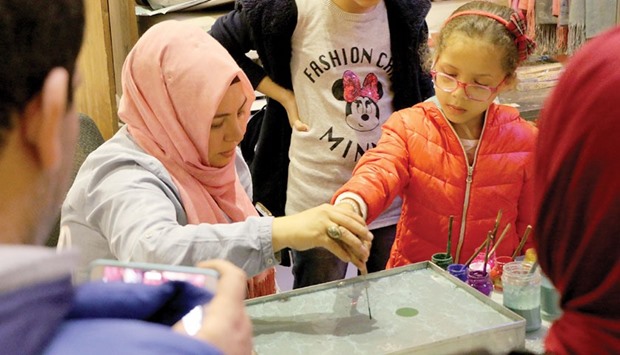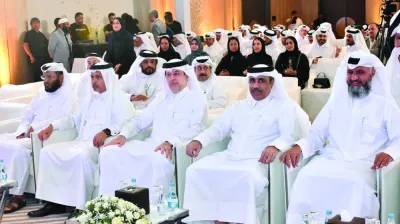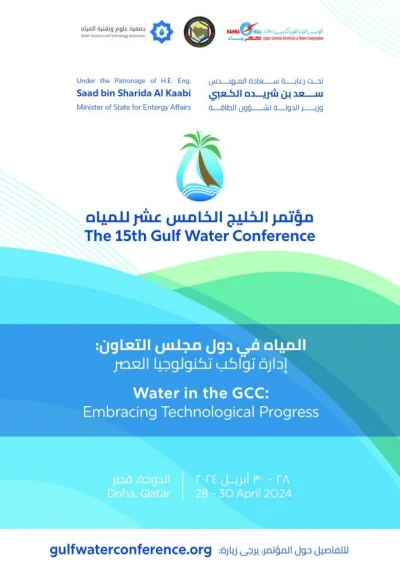She paints on water and then transfers the painted designs on to fabric or paper to create colourful neckties, scarves, headgear and some masterpieces of art. Selma Ersoy has not just been earning her livelihood from this Turkish art form, she has also been spreading the knowledge to the younger generation.
Ersoy, a Turkish Ebru (paper marbling) artist, demonstrated her skills in the Souq Waqif Festival where hundreds flocked to learn the art of making accessories colourful and more attractive with unique designs.
“My designs are entirely my own. They come straight out of my head. Usually, it happens just instinctively. When I start painting, the designs starts emerging in my head and I transfer it on to water,” Ersoy tells Community.
Ebru is a traditional Turkish art and can be defined as painting on water and transferring this painting onto paper. This style is also called marbling. A gum called tragacanth is added to the water to yield a thickened liquid, and horse hair brushes are used to apply paints which are insoluble in water.
“We use 100% pure natural colours with no chemicals whatsoever added to it. These pigments are mostly extracted from the roots of the plants through a rigorous process,” says the artist.
She says she learnt the art from professional institutions and it took her a year to master its different forms. However, one technique led to the other and she kept experimenting and exploring different methods to widen her knowledge.
Paper marbling can produce patterns similar to smooth marble or other stone. The patterns are the result of colour floated on either plain water or a viscous solution known as size, and then carefully transferred to an absorbent surface, such as paper or fabric.
Ersoy says the art is very old and very popular in Turkey even today. Through several centuries, people have applied marbled materials to a variety of surfaces. It is often employed as a writing surface for calligraphy, and especially book covers and endpapers in bookbinding and stationery. Part of its appeal is that each print is a unique monotype.
“You will not find another copy of a design that I would paint. This is the uniqueness of Ebru,” says Ersoy. She is an expert at paper and cloth equally. Ersoy sold many of her designed headscarves and neckties during the two-week long festival.
People, particularly women, showed great interest in learning the technique of transferring the designs from water on to fabric, she says. At the festival, she invited children to create designs themselves with her help and they left with their created piece of artwork as a souvenir.
Ersoy says there are several methods for making marbled papers. A shallow tray is filled with water, and various kinds of ink or paint colours are carefully applied to the surface with an ink brush.
Various additives or surfactant chemicals are used to help float the colours. A drop of negative colour made of plain water with the addition of surfactant is used to drive the drop of colour into a ring. The process is repeated until the surface of the water is covered with concentric rings.
The floating colours are then carefully manipulated either by blowing on them directly or through a straw, fanning the colours, or carefully using a human hair to stir the colours. Another method is Ebru in Turkish. Ethnic Turkic peoples were not the only practitioners of the art, as Persian Tajiks and people of Indian origin also made these papers. Historic forms of marbling used both organic and inorganic pigments mixed with water for colours, and sizes were traditionally made from gum tragacanth (Astragalus spp), gum karaya, guar gum, fenugreek (Trigonella foenum-graecum), fleabane, linseed, and psyllium.
Many Ebru artists use powdered carrageenan extracted from various seaweeds. Colours made from pigments are mixed with a surfactant such as ox gall. Sometimes, oil or turpentine may be added to a colour, to achieve special effects.
The colours are then spattered or dropped onto the size, one colour after another, until there is a dense pattern of several colours. Straw from the broom corn was used to make a kind of whisk for sprinkling the paint, or horsehair to create a kind of drop-brush.
Ersoy would help the children do this technique with their hands by simply guiding them through gestures. “I teach a lot of children this art back in Istanbul and they show keen interest in learning this,” says the Turkish artist.
Once the colours are laid down, various tools and implements such as rakes, combs and styluses are often used in a series of movements to create more intricate designs. Ersoy says the people in Qatar loved the art form and many showed interest in learning and practising it.

PASSING IT ON: Selma Ersoy taught children how to paint on water. Photos by Umer


